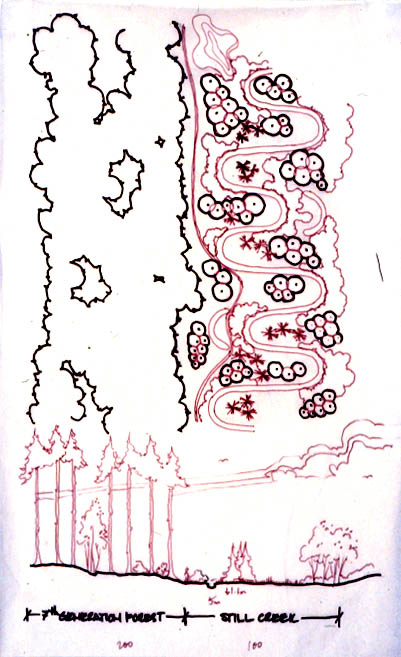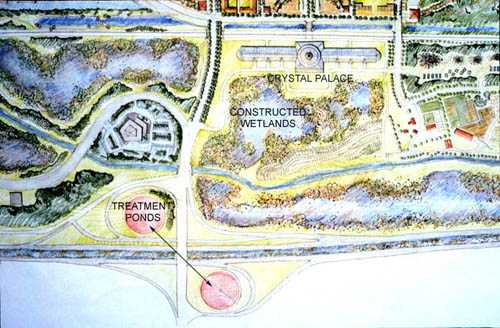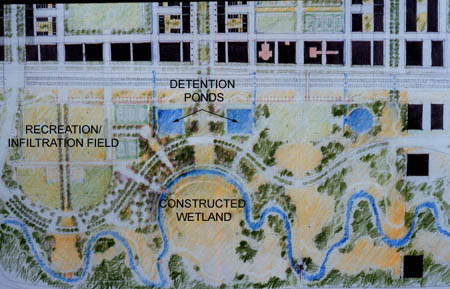Example
6
Section
and plan of the Still Creek restoration. One way Still Creek
has been restored is by changing the vertical and horizontal
morphology of the stream course. Re-grading, riffles (or periodic
changes in elevation), and meanders allow for the formation
of pools and areas of calm water where fish and waterfowl can
find habitat for feeding, resting, and laying eggs. The streamside
vegetation (shown in section view) is vital to the streamís
health as it provides shade, organic nutrients and bank stability. 
Example 7
Team
One and Two approached ecological infrastructure differently
in the valley bottom. As the drawing below shows, Team Two envisioned
a bioengineering zone, at the centre of which is the Crystal
Palace, a working greenhouse that uses solar aquatic technology
to recycle the districtís sewage for methane gas and heat, which
it then uses to grow hydroponic produce. Part of this energy
would also be funnelled back up the slope for use in heating
the district. Constructed wetlands surrounding the zone assist
in the final stages of infiltrating runoff.
 Example 8
This
drawing shows how Team One integrated recreational
amenity with stormwater management and stream stewardship.
Surface drainage patterns follow those of the grid structure
and culminate in detention basins at street ends. These basins,
together with playing fields (which double as large infiltration
areas), are organizing units around which the larger open-space
structure takes shape.
Example 8
This
drawing shows how Team One integrated recreational
amenity with stormwater management and stream stewardship.
Surface drainage patterns follow those of the grid structure
and culminate in detention basins at street ends. These basins,
together with playing fields (which double as large infiltration
areas), are organizing units around which the larger open-space
structure takes shape.

|
|